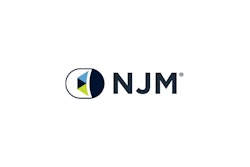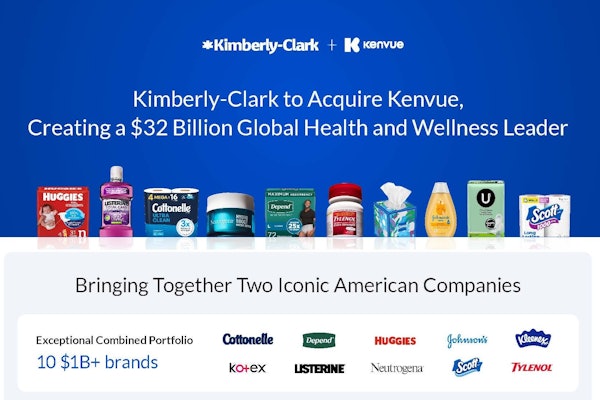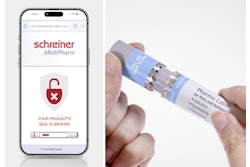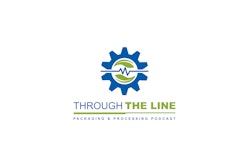When it comes to pharmaceutical serialization, companies at the forefront of planning and implementation are most likely to reap the rewards. That was the message at a recent interpack 2014 seminar addressing the challenges of implementation (pwgo.to/870).
Outlining the most daunting serialization implementation challenges was a Domino white paper that said, “The prevailing wisdom is that serialization will adversely impact the OEE for most production lines by around 10 percent to 20 percent, which will cost millions of dollars in production time for the average drug producer.”
Not to be deterred, contract packager Apace Packaging LLC started down the road to serialization not long after opening its doors in 2008, looking to meet California’s e-pedigree goals. Its strategic planning and investment in serialization technology and packaging equipment is about to pay dividends, despite the recent presidential signing into law of H.R. 3204, which preempted all existing and future state pharmaceutical serialization and pedigree laws, including California’s.
Apace is a packager and repackager of solid oral-dose tablets and capsules serving pharmaceutical and nutraceutical manufacturers and distributors. Frank Guthrie, the company’s Director of Serialization/Operations, says, “When they passed the federal law, we went to the ownership and told them we could back out [of pursuing serialization capabilities] or we could continue. We made the decision to continue because we believed that if we were not the very first, we would be one of the first contract packagers to offer a serialization solution to its customers. In such a highly competitive industry, we know that we must stay on top of regulations and technical advances. In the end, it’s about maintaining our competitive advantage, so that we retain existing business, and have a higher probability of picking up new business.
“Our largest customer is planning to push forward with their serialization solution, and working together on implementation allows both companies to test each other’s systems. Our other customers, who are aware that we are going to a serialization-ready state, have contacted us about bringing some packaging [work] to us. So already we’ve started to add new business because of this.”
As this issue went to press, Apace has completed implementation of its serialization effort on half of the four packaging lines at its Fountain Run, KY, headquarters/packaging facility, thanks largely to systems from Optel Vision. Predicts Guthrie, “By August 2014, we plan to be 100-percent serialization-ready with our four lines.”
A bit about Apace Packaging
Apace packages products exclusively for other companies, producing primarily prescription-only generic products. Overall, the company operates a 17,500-sq-ft warehouse, a 3,600-sq-ft maintenance shop, a 3,600-sq-ft office section, and a 45,000-sq-ft packaging area.
The packaging area today consists of four lines: two bottling and two blister tf/f/s lines. The blister lines produce packs that include 10 tablets in a 2x5 configuration. Bottle-fills range in size from 40cc to 950cc, with pill counts from 14 to 1,000. The lines run 24/6, typically on two 12-hr shifts.
As a contract packager, Apace thrives on versatility and flexibility. That means investing in new packaging machinery on a regular basis. New checkweighing and labeling equipment have been added recently. “The strategy is that we are trying to update everything as much as we can,” says Guthrie. “It’s an ongoing process.”
Among the equipment additions of late are the following:
• Checkweighers for the two bottling lines from Thermo Scientific
• A new Cremer tablet counter for a bottling line from NJM Packaging
• A new TF1e blister thermoforming line from PharmaWorks equipped with a cartoner from Serpa Packaging
• A new 130 Bronco labeler for a bottling line, also supplied by NJM Packaging
Apace General Manager Patrick Ferguson explains that between the new machinery, facilities improvement/expansion, and serialization efforts, Apace Packaging has invested about $7 million in the past two years.
A focus on serialization
Guthrie says, “Over the past three years, we’ve learned as much as we could about serialization, meeting with providers and gathering all the information we could in an effort to help us make good choices. We narrowed it down about 18 months ago to three providers.
“Each of the providers came in and presented how they would do things. In the end, my recommendation was to go with Optel Vision. Everybody here felt good with that, so we chose Optel Vision for the line-level portion of our serialization process.”
There was another factor in the supplier decision, he notes: “We already had Optel Vision systems in use with all our labelers and our tablet counters. We have always received good service in the past and that gave them a leg up. We really like their solutions.”
In terms of the serialization hierarchy, Guthrie explains: “We are using ROC IT Solutions for the warehouse portion, and for our EPCIS repository, we use Oracle OPSM. The Oracle OPSM is the cloud where we store information. Oracle is also the vendor for our ERP system where we do all of our billing, warehouse information, and accounting.”
Bottling line process
Optel Vision equipment is used on all four Apace packaging lines. The Optel Vision systems on both bottling lines are the same, while the same is true for its two blister lines. In order to serialize each line, Apace used three main Optel Vision solutions: the BottleTracker™, the CartonTracker™, and the BundleTracker™. Each of these includes a Pharmaproof™ for all inspections, and the LineMaster™ for line management systems. Each PharmaProof product includes cameras and provides tracking for each package level (bottle, bundle, case, and pallet).
Each bottling line uses four PharmaProofs (one for each of the four levels mentioned above) and one LineMaster. All are standalone systems with a local Human Machine Interface located on the top of the enclosure, except for the BundleTracker, where it is integrated to the BundleTracker.
The PharmaProof systems communicate the serialization information to the LineMaster, which serves as the brain of the serialization system by linking all the PharmaProofs together, controlling the printers, and by connecting to Apace’s internal server or ERP system in order to retrieve the information needed for the serialization.
At the NJM or Quadrel labeler, each bottle (known as the unit level) is identified with a unique serial number. There is a Data matrix code printed by a SmartDate® 5 Coder from Markem on the bottle labels. Each Data matrix code contains the serial number, GTIN, lot number, and expiration date. Each label is tracked on the label web and then applied on the bottles. Each bottle is tracked on the labeler conveyor by encoder. If there is a defective product, the bottle is automatically rejected at a reject station. At this point, each bottle has its own unique serial number printed on its label.
As bottles travel up to the BottleTracker by conveyor, an outserter machine applies a topsert on top of the bottles. This is a folded leaflet applied to the top of each bottle that contains information related to the product. The BottleTracker associates the electronic product code (EPC) on the bottle label to a tracking code (TC) printed on the top or on the bottom of the bottle. The TC is for internal utilization and once it is associated with each respective bottle EPC it allows an Optel Vision camera to read the bottles in a bundle or in a case, where the EPC can’t be read. This tracking code can be printed with UV ink or normal ink. It can either be located on the top (cap) or the bottom of the bottle.
For Apace, the TC is printed on the bottom of the bottles with UV ink by a Domino ink-jet coder; the ink cannot be seen with the human eye. Each bottle is grabbed by two belts from the infeed conveyor of the Optel BottleTracker to allow printing on the bottom. There are seven cameras installed in the BottleTracker, as well as a UV printer and a reject station on the outfeed conveyor.
The first camera is called “blob detection” and detects if there is already a TC printed or not. After passing that camera, the bottle reaches the print head. If there is no TC printed, a new TC is printed on the bottom of the bottle. Once the TC is printed, the bottle is conveyed to a station that includes six cameras, four of which are called “360 station” as they are located all around the bottle to cover all “angles.”
These four cameras take an image simultaneously in order to find where the EPC is located on the bottle, and they then read it. At the exact same time a camera looking at the bottom of the bottle takes an image of the TC. Then the TC is associated to the EPC on each bottle. The seventh camera looks at the top of the bottle and checks for the presence of the topsert. There is a reject station installed on the outfeed conveyor that rejects bottles if needed.
At this point, the bottles are ready to be bundled. The bottles convey to the bundler for shrinkwrapping. On both lines, Apace uses bundlers from CVC Technologies. Bottles then pass through a heat tunnel that shrinks the wrap all around the bundles.
Optel Vision’s BundleTracker is used to aggregate the bottles in the bundles. This machine includes three cameras, a print-and-apply labeler from Domino, provided by Optel Vision, and a reject station. The first two cameras are located together under two conveyors, which are positioned about 4-in. apart. This opening allows the cameras to be installed underneath so they can look at the bottom of the bundles and read the bottles within the bundle. The two cameras take multiple images of the tracking code on the bottom of the bundles while they are moving from the first conveyor to the next.
Once all the TCs have been read in the bundle (that are associated to their respective EPC on the bottle), the information is sent to the LineMaster, which sends a print signal to the printed label containing a unique serial number for this specific bundle. Once the bundle reaches the print-and-apply labeler, the label is applied on the top of the bundle. The bundle continues and passes under a camera reading the bundle label and the bundle EPC. At this point, the aggregation process is completed for the bundle and all bottle EPCs are associated (aggregated) to the bundle EPC. The tracking continues up to the ejection station, where a defective product would be rejected.
At the outfeed of the BundleTracker, there is an accumulation table where the bundles are kept for manual packing into a case.
Next is case tracking, which includes two cameras, a conveyor, a Domino print-and-apply labeler, provided by Optel Vision, and a reject station. The first camera is located on the side of the case erector. The operator scans one bundle at a time and places it directly into a case.
When the quantity of bundles in a case is reached (determined by the product recipe), the operator presses on a pedal that brings down a gating device, allowing them to push the case in a case taper. At the exit of the case taper, the case is conveyed to a print-and-apply unit that applies the label on the case. The tracking for each case is done with sensors throughout the case taper and then by the encoder when the case reaches the conveyor. That’s done to make sure the exact label is applied to the appropriate case. Once the label is applied, the case continues and passes a camera that reads the case label. The case EPC is read and the bundles are aggregated in the case.
The LineMaster includes a table, a desktop coder, and a hand-held and fixed scanner. The fixed scanner is installed on the outfeed conveyor after the case tracking and scans the cases as they pass in front of it before they are manually put on the pallet. Each case can also be scanned manually with a hand-held scanner, which can be used for rework when needed, and put on a pallet. Once the pallet is completed, a pallet label is printed by the desktop printer. Once the pallet label is placed on the pallet, the operator scans the label and the aggregation of the cases to the pallet is completed.
Blister line process
Each Apace blister line includes two PharmaProofs (one for each level) and one LineMaster. All are standalone systems with a local HMI located on the top of the enclosure, except for the integrated CartonTracker.
For these blister lines, the CartonTracker includes one camera, a Wolke/Videojet ink-jet printer provided by Optel Vision, and a reject station that’s included in the CartonTracker. This self-standing unit prints the serialized information on the cartons. The cartons convey to the CartonTracker. All the information is printed on each carton so that each one receives a unique serial number. Within the CartonTracker, the cartons are tracked and rejected if needed. Cartons travel from the outfeed conveyor to an accumulation table for manual case packing.
At the PackStation™ (Manual Aggregation Station), the second PhamaProof system uses three cameras, a table, a Domino print-and-apply labeler provided by Optel Vision, and a gating device. The cartons are manually placed in a case, with the print information facing up so cameras can read them. Once the cartons are in the case, the operator moves the cases to the table, under the first two cameras, reading all the EPCs.
Then the case is manually moved to the print-and-apply unit where a case label is applied. The case is manually moved in front of a camera, where the case label is read and the aggregation of the cartons in the case is completed. If every step on the manual aggregation is good, the gating automatically comes down and the operator pushes the case onto the outfeed conveyor. The case is then set on a pallet where the same process is used as on the bottling lines.
Customer appreciation
Reports Guthrie, “Serialization is really attractive to the customers, and to the big three pharmaceutical distributors. They are really pushing for this aggregation because all they have to do is scan the pallet label and they can get all the information that goes with that pallet from that one scan.”
So, what happens if that pallet load is opened up and individual cases are put on mixed pallets to go elsewhere through the chain?
Guthrie says that would occur at a distribution center, where personnel would receive that pallet and scan it to verify that the information is correct. “If product on the pallet is divided, they would scan that pallet label and deactivate that pallet. They are going to change the configuration of that pallet when they break it. So they deactivate that pallet label. At that point they would have to scan each case individually.
“If they break the individual case they are going to deactivate that case just like they did the pallet because they are going to change the configuration of that case. So that case label is no good anymore. They would deactivate the case label, open the case up, take out the bundle they are going to send, and scan that bundle. When they scan that bundle they still know exactly which 12 bottles are in that bundle. They would probably ship the entire bundle to the pharmacy. The pharmacy could scan the bundle and know what 12 bottles they received.”
As for the coding itself, Guthrie explains: “We are using the GS1 standard with the GTIN number for each add-on that would contain the manufacturer’s code, and a 14-digit random serial number. We could use sequential numbers but most people want to just use random numbers and it really doesn’t matter as long as we made everything together and can track the number. We can’t repeat the number. It’s the GS1 standard.”
Apace’s Ferguson notes that the codes are tracked on the Optel Vision system during production. At the end of production that information is pushed up to the OPSM repository and stored there.
Guthrie praises Optel Vision for handling the entire process, and for educating Apace and its customers about the serialization process.
Have Apace customers or potential customers responded to what Apace is doing? “Absolutely,” Guthrie responds. “That is the reason we stayed at it and kept moving forward with serialization because as a contract packager we hope to expand and add more production lines. We hope this brings in new business.
“We have two very large customers that are interested and they know what we are doing. Hopefully we will get their business once we get the two lines up and running. We definitely feel like it is going to be good for us. It will be an easy sale for us. Our primary customer was going to start out with serialization once we got running. Initially, we’re going to pick out a couple of products and start serializing those first. They will then be serialized every time we run them. By the end of August I would expect to have the other two lines hooked up and running. At that point, that customer plans to serialize 100 percent of its products that we package for them.”
Watch a video on Optel Vision’s TrackSafe track-and-trace product at pwgo.to/871


























